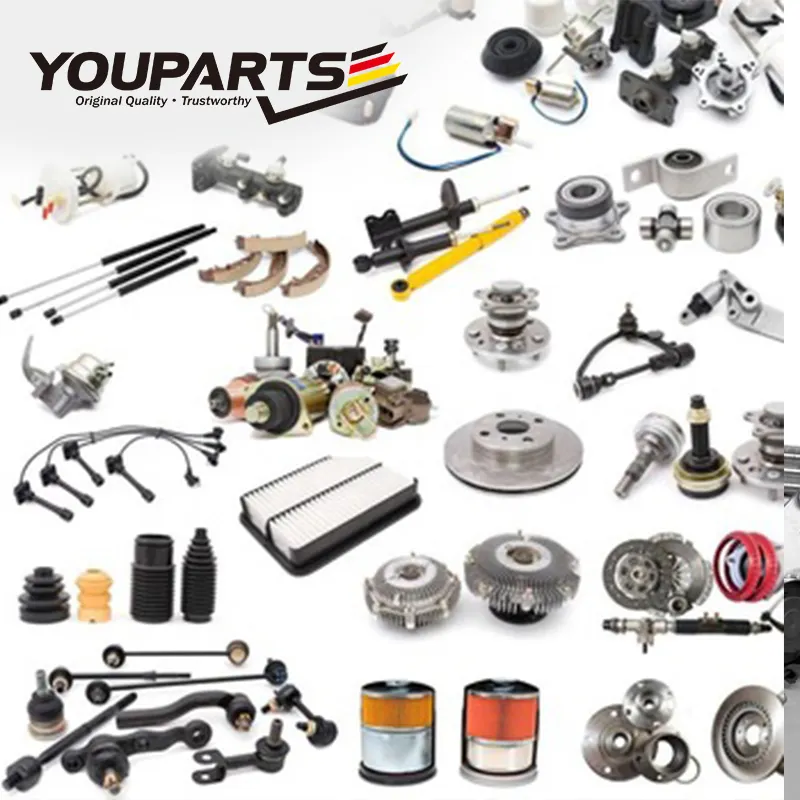Here are some key points to consider when making an assessment of the quality and origin of automotive parts with their advantages and disadvantages to help you make informed choices:
1. Choose OEM vs. Aftermarket
Consider whether you want OEM (Original Equipment Manufactured) parts or aftermarket.
Pros:
OEM parts are designed to fit perfectly and perform well.
Quality aftermarket parts are often inexpensive.
Cons:
OEM parts are typically more costly.
Some aftermarket products may not last for as long as OEM components.
2. Check for Certifications and Standards
Tip: Search for parts that have been certified by SAE ISO TUV.
Pros : Ensuring safety and conformity.
Pros: Certain parts are more expensive or hard to find for older vehicles.
3. Find out about the reputation and Quality of a Manufacturer
Tips: Select well-known brands that have the track record of achieving achievement.
Benefits: Lessening the chance of defective parts.
Cons: It’s possible that copyright products are available for well-known brands. It is imperative to be vigilant.
4. Shop with a Trusted Retailers
Tips: Purchase parts from authorized dealers or on trusted online platforms.
The pros: Reputable retailers typically provide warranties and verified quality.
Cons: Prices may be higher than those of third-party, unverified sellers.
5. Examine the build and material quality
Make sure that the materials you are using are resistant to corrosion and of high-quality.
Pros: It ensures durability and security.
Pros: Online parts might not be checked prior to the purchase.
6. Consider Refurbished Parts
Refurbished components are ideal for high-priced components such as engines or transmissions.
Pros: Obtaining it from reliable suppliers, it is cost-effective and does not sacrifice quality.
Cons: The quality is inconsistent based on the process of refurbishing.
7. Beware of copyright products
Verify part numbers, packaging, labels and packaging for counterfeits.
Benefits: Helps to prevent installing unsafe or inferior parts.
Con: Identifying counterfeits requires expertise and a keen eye for the smallest details.
8. Verify Warranties
Tip – Prioritize the parts with warranties. This will be covered for any defect or failure.
Pros: Provides peace of mind and financial security.
Pros: If there are issues the warranty claim process can take a long time.
9. Read reviews from customers and rate them
Review online reviews to gain insight into performance, durability and fitment.
Pros: Helps to identify trustworthy products and also weed out inferior ones.
Cons: Reviews can be biased and unreliable.
10. Learn about regional differences in quality
Keep in mind that different regions could create parts with different quality (e.g. replica factories vs. original factories).
Cons: It is not the most cost-effective choice, but it does provide the highest quality product available.
Cons: Imports that are of high quality can be costly or require longer delivery times.
Take a look at the pros and pros and.
Pros:
For safety, reliability and performance, you require parts of higher quality.
Trustworthy sources can help reduce risks such as copyright parts or warranty issues.
Cons:
Quality parts can cost more initially.
It can take a lot of time to check for authenticity and ensure quality.
By balancing considerations for quality and authenticity by balancing considerations for quality and source, you’ll be able to make intelligent choices that will improve the performance and value of your car in the long run. Take a look at the recommended autokimija car parts par gaz cars for website info including in auto parts, cac parts, bmw auto salvage, auto parts l, by auto parts, 11 auto parts, auto deta?as riga, autodalu veikals, spare parts vin, bmw wrecker and more.

Installing Car Parts The Top 10 Tips To Take Into Consideration
When you purchase auto parts, understanding installation requirements can prevent any unexpected problems or costly repairs. Here are 10 essential tips together with their pros and pros and.
1. It is important to know the difference between professional installation and DIY.
TIP: Prior to installing any component, make sure to check if it requires the certification of a mechanic. This is crucial for components that are critical such as suspension and brakes.
Pros: Ensuring an appropriate installation and warranty coverage.
Cons: More expensive total costs due to labor costs.
2. Evaluation of the Complexity and Installation
Tip: Consider the level of complexity of the installation prior to purchasing the product (e.g. bolt-on vs. complicated wiring).
Cons: You are able to decide whether you want to do it yourself or hire a professional.
Cons: Installers who aren’t trained may make a mistake when trying complex installations.
3. Be sure to have the necessary tools readily at hand
TIP: Determine whether specific tools (e.g. torque wrenches or diagnostic equipment) are required to complete the installation.
Cons: Installation is quick and properly.
Con: Specialized tools may cost a lot.
Make sure you review the instructions and support included.
Tip – Check that the product comes with clear instructions for installation or customer service access.
Benefits: Reduces installation errors and speeds up the process.
Cons: An absence of instructions can lead to confusion or improper installations.
5. Verify compatibility of adjacent parts
Tip: Check that the new component can be integrated seamlessly with existing components.
It is time-saving, and it reduces the chance of an installation failing.
Cons In the event of a failure to follow this procedure, it can result in the purchase of additional parts.
6. Make a plan for the requirement of calibration or programming
TIP: Make sure to determine if the part requires calibration or updates to software after installation (e.g. sensors, electronic modules).
Pros: It guarantees optimal performance, and prevents malfunctions.
Cons: Calibration might require specialized expertise or equipment.
7. Learn Environmental or Safety Standards
It is important to be aware of safety precautions that are required for installation.
Pros : Prevents accidents, assures safe handling.
Pros: Adding equipment or preparations may be needed.
8. Plan for Downtime During Installation
Consider the time it will take to set up the system, and if your vehicle is out of commission for a short period.
Pros The ability to manage schedules and avoid any inconvenience.
Cons: Long installation times can disrupt your routine.
9. Make sure you are aware of the warranty requirements before Installing
Tip – Verify whether the warranty on the part calls for professional installation, or if there are any particular procedures.
Pros: It guarantees that the warranty will remain valid.
Cons: Poor or uncertified installations could void the warranty.
10. Maintaining and future accessibility is important.
Tip: Determine the ease of access to the system for maintenance in the future.
Pros: Makes it easier to make future repairs and upkeep.
Con: Putting in equipment that is difficult to reach can increase the price of labor for future work.
Final Thoughts
Benefits of Knowing the requirements for installation
Installation errors are less likely.
Aids in reducing expenses by determining the requirements for professional services.
The component that has been installed is secure and works optimally.
The Negatives of Not Paying Attention to Installation Requirements
If it is installed incorrectly If the installation is not done correctly, the vehicle could be damaged or experience parts failure.
Could result in invalidated warranties and additional costs.
The vehicle may not be in a position to service if there are unanticipated complications.
Take note of these suggestions before you install an auto component. This way, you will be in a position to make an informed decision and have an easy installation. Take a look at the recommended comfort parts for bentley cars for website advice including auto parts i, auto parts c, rd auto spares, spare parts vin number, auto par5s near me, electronic auto parts, c auto parts, e auto parts, xpart, parts checker and more.

